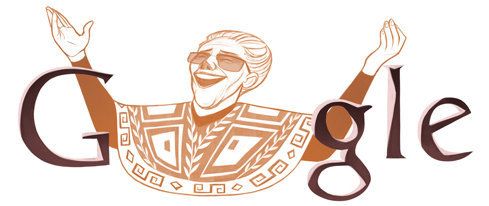In March of 1968, Cesar Chavez completed a 25-day fast in a tiny windowless room in Delano, Calif., that drew national attention to his movement and galvanized public support so as to dramatically change farm worker rights in the country.
Chavez ended the fast by receiving holy communion from U.S. Senator Robert Kennedy at an outdoor Mass attended by hundreds and establishing his place among Americans who have made a difference.
Today, that Delano compound is part of plans by the National Park Service to establish the Cesar Chavez National Historic Park at four sites in California that played important roles in the life of the late farm labor leader – including Nuestra Señora Reina de la Paz, also known as La Paz in Keene, Calif. — and another in Arizona.
Ultimately, the park could wind up becoming the farm labor organizer’s greatest legacy.
Chavez’s family says the recognition will stamp his name and Latino heritage on one of the country’s most cherished institutions, the national park system.
“Thanks to the leadership of President Obama and Secretary of the Interior Ken Salazar, La Paz will be preserved for future generations and the story of my father and thousands of Latinos, immigrants and others who joined La Causa will be shared with all of America through the National Park Service,” says Paul Chavez, president of the Cesar Chavez Foundation and Chavez’s middle son.
Locations for the Cesar Chavez national park
The other sites chosen as part of the Cesar Chavez national park are the Filipino Community Hall in Delano, the McDonnell Hall in San Jose and the Santa Rita Center, a downtown Phoenix church hall.
“Cesar Chavez was one of the most important labor and civil rights leaders of the 20th century, and the farm movement he led improved the lives of millions of agricultural workers,” said National Park Service Director Jonathan B. Jarvis. “Sites associated with his life and the movement he led are an important part of American history.”
They were chosen as part of a Congressional mandated special resource study to identify sites significant to the farm-worker movement that met the historical landmark criteria, according to the National Park Service.
“The significance of the study was that Cesar’s works occurred in many different places,” says Marc Grossman, who was Chavez’s longtime spokesman, speech writer and personal aide.
“There were dozens of locations across the country. The special resource study represents the breadth and legacy of his work. That’s why it is significant.”
Chavez national park faces uphill battle
But getting congressional approval to make the Cesar Chavez national park a reality could be an uphill struggle.
Unlike the Cesar Chavez national monument created last year through President Obama’s own executive power, establishing a national historical park requires congressional approval.
“Not a lot is happening in Congress right now, and it’s hard to get anything passed among the deadlock between the two parties,” says Ron Sundergill of the National Parks Conservation Association. “So, we’ll see.”
California farmers’ long opposition toward the United Farm Workers could also pose hurdles.
“I would suspect there are people, particularly in these highly partisan times, who might have a hard time with this,” says Paul Chavez.
“(But) we think it’s a fitting move. My father’s work took place in a lot of different areas.
Originally published on VOXXI as National park could become Cesar Chavez’s ultimate legacy
